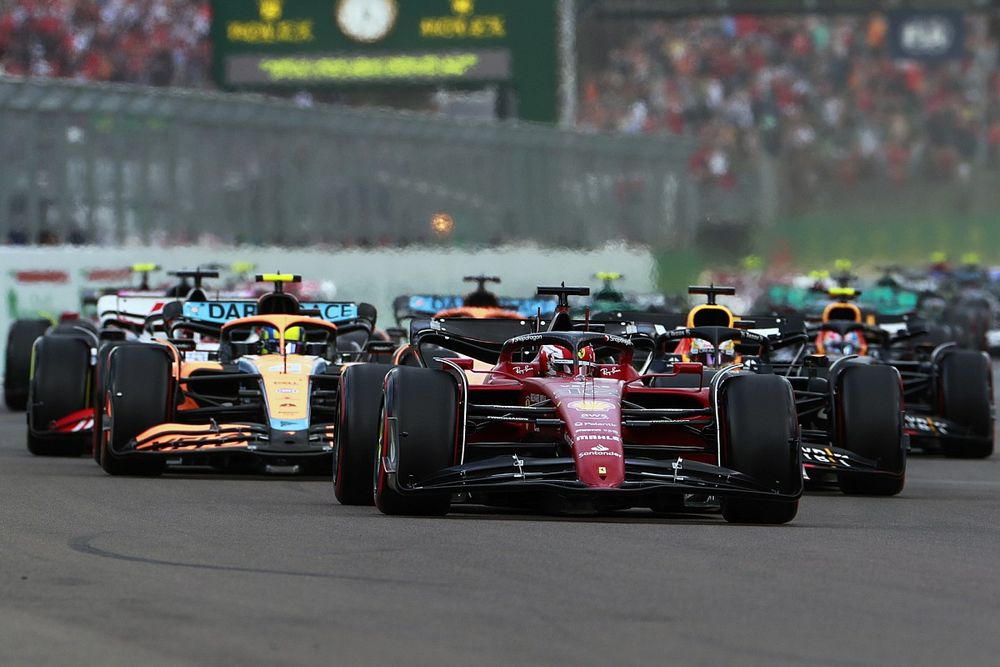F1’s Sprint-Race Weekend Format Explained

In 2021, Formula One decided to shake things up a little by changing the weekend format at a handful of races. The idea was to create some more drama and excitement leading up to the race on Sunday. The experiment has been popular with most fans and drivers but not without some controversy. Most notably, Max Verstappen stated, “I’m happy with just the main race. I think that’s way better for the excitement. Naturally, of course, I hope there won’t be too many changes, otherwise I won’t be around for too long.” In all fairness, Verstappen was partially responding to a report that F1 CEO, Stefano Domenicali, thought the sport could manage as many as thirty-two races in a year, with some additional tweaks to the format, which is ridiculous.
“I’m happy with just the main race. I think that’s way better for the excitement. Naturally, of course, I hope there won’t be too many changes, otherwise I won’t be around for too long.” -Max Verstappen
Like it or not, sprint races are here, at least for the near term, as reports on viewership from the 2022 season indicated more people watched on sprint-race weekends. So, in 2023 the number of sprint races increased from three to six, which means that about 25% of race weekends will hold a sprint race in addition to the feature race. But, what exactly is a sprint race and how does it work?
A sprint race is exactly what it sounds like, a sprint. It’s a mad dash for 100 kilometers (62.137 miles), which is approximately one third the length of a grand prix (305 kilometers). The short distance means that tire changes aren’t necessary and pit stops are not required. What makes it interesting is that points are awarded to the top eight finishers, starting with eight points for first and going down to one point for eighth. If a driver can win all six sprint races in a season that’s an extra forty-eight points. Nice, right? Unfortunately, there can be some serious consequences if a team or driver makes a mistake or runs into some bad luck. That’s mainly because any damage to the car, or potential grid-spot penalties incurred during the sprint race, will carry over to the feature race.
What this means is that if an overly opportunistic driver decides to go for an overtake that defies the laws of physics, he may destroy his own car or someone else’s, and their weekend might be over before the feature race even begins. With the new format, qualifying for the main event will take place just a few hours after the sprint race. A heavy crash might cause some internal damage that mechanics could miss or not be able to fix in such a short window of time. Obviously, the sprint race makes for an exciting weekend from the fan’s perspective, but a bit of a headache and a potentially expensive throw of the dice for the teams.
A typical race weekend begins with two free-practice sessions on Friday, followed by another practice on Saturday and then qualifying. It’s all a build up to the race on Sunday. Teams are able to test aerodynamics and grip at the first practice, moving on to tire wear over long runs in the second practice. The third and final practice session typically focuses on qualifying pace as teams get ready to find out who’s the fastest over one lap. The tension ratchets up all weekend while lap times go down. Qualifying becomes a measure of how well teams and drivers have set the car up to perform under the current track conditions. The race on Sunday is without a doubt the main attraction. On sprint race weekends, however, the schedule changes to the following:
- Friday- 60-Minute Practice
- Friday- Sprint Qualifying
- Saturday- Sprint Race
- Saturday- Grand Prix Qualifying
- Sunday- Grand Prix
Qualifying on Friday and Saturday, with races on both Saturday and Sunday does make for an action packed weekend, but with only one practice before qualifying, the cars won’t be putting in their best lap times and there will be more room for driver error. What’s more, the cars will be in parc ferme after the first practice session, meaning that the set-up can not be changed to improve lap times and overall performance as they would on a normal weekend. Parc ferme, however, will be lifted after the sprint race so changes can be made before qualifying for the main event. In any case, with six sprint races this year, they can’t just be written off as a side-show, even though there are legions of old-school fans that would like to.
As it stands, sprint-race weekends will incorporate two separate rounds of qualifying. Sprint qualifying, now on Friday, is a shortened version of standard qualifying, so the first session only lasts twelve minutes, the second lasts ten minutes, and the third goes for eight minutes. The results for this abbreviated Friday qualifying will be applied to the sprint race on Saturday morning, but will have no bearing on Sunday’s race. After Saturday’s sprint race, qualifying for the main event will take place, with the first session lasting eighteen minutes, the second lasting fifteen, and the third lasting twelve. The results of this session will determine the starting grid for Sunday’s Grand Prix.
If all of this sounds a little confusing, well…that’s because it is. It may take some time for teams and drivers to find the right balance between risk and reward on sprint weekends. For the rest of us, it will definitely be entertaining to see how it plays out.
2 thoughts on “F1’s Sprint-Race Weekend Format Explained”
Comments are closed.